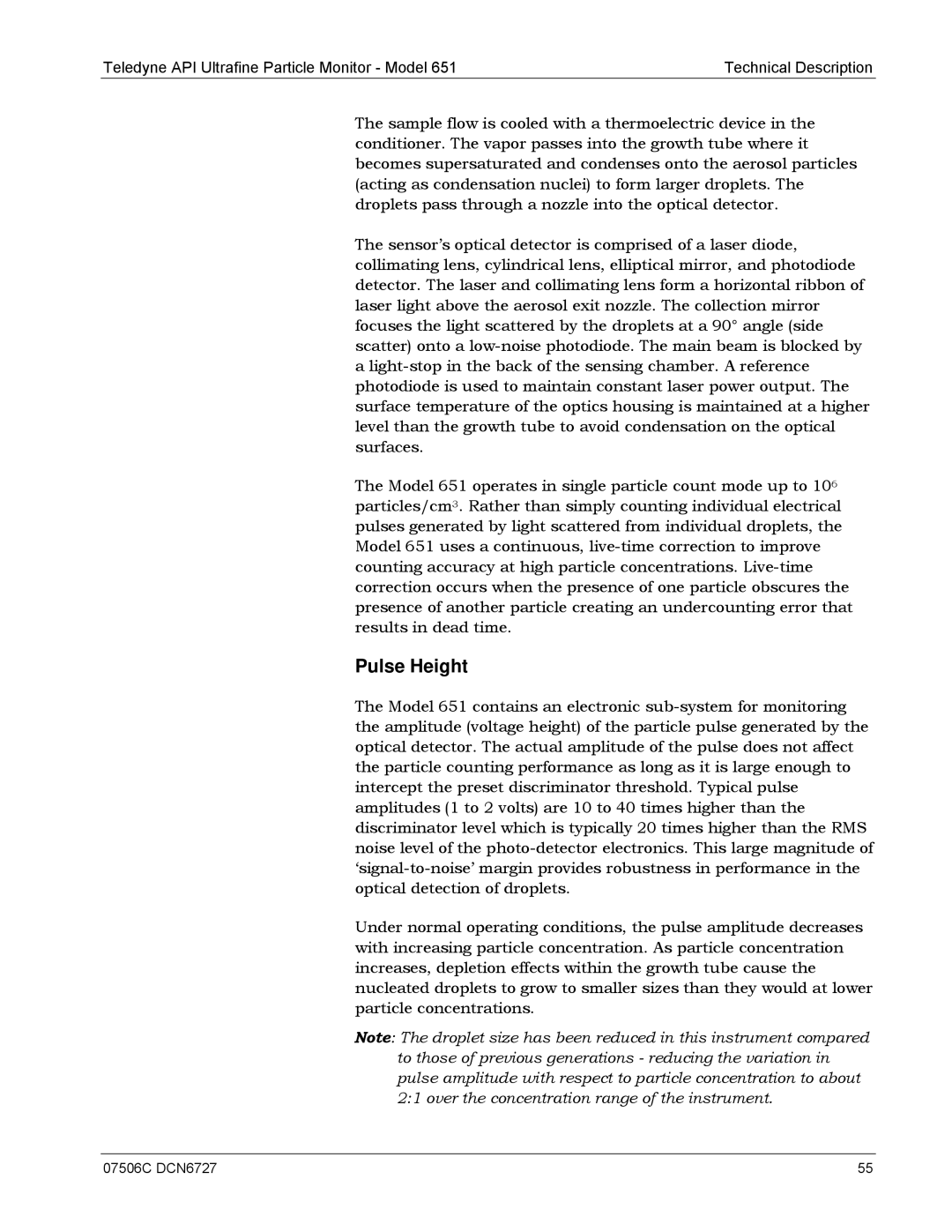Teledyne API Ultrafine Particle Monitor - Model 651 | Technical Description |
The sample flow is cooled with a thermoelectric device in the conditioner. The vapor passes into the growth tube where it becomes supersaturated and condenses onto the aerosol particles (acting as condensation nuclei) to form larger droplets. The droplets pass through a nozzle into the optical detector.
The sensor’s optical detector is comprised of a laser diode, collimating lens, cylindrical lens, elliptical mirror, and photodiode detector. The laser and collimating lens form a horizontal ribbon of laser light above the aerosol exit nozzle. The collection mirror focuses the light scattered by the droplets at a 90° angle (side scatter) onto a
The Model 651 operates in single particle count mode up to 106 particles/cm3. Rather than simply counting individual electrical pulses generated by light scattered from individual droplets, the Model 651 uses a continuous,
Pulse Height
The Model 651 contains an electronic
Under normal operating conditions, the pulse amplitude decreases with increasing particle concentration. As particle concentration increases, depletion effects within the growth tube cause the nucleated droplets to grow to smaller sizes than they would at lower particle concentrations.
Note: The droplet size has been reduced in this instrument compared to those of previous generations - reducing the variation in pulse amplitude with respect to particle concentration to about 2:1 over the concentration range of the instrument.
07506C DCN6727 | 55 |
